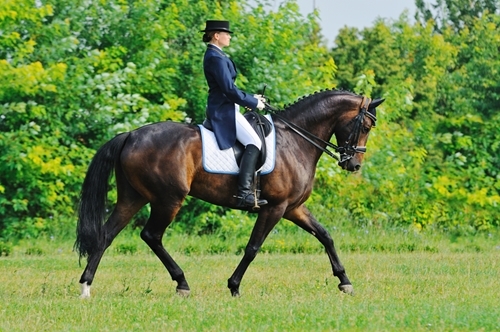Many people are drawn to dressage events for their artistry and elegance. As one of the three equestrian events that are held at the Summer Olympics every four years, it remains widely recognized as the sport with finely dressed riders and impeccably groomed horses. But what exactly is dressage, and when did it start? Contemporary dressage is based on the concepts of horse training that were first developed thousands of years ago by the ancient Greeks. Over the millennia, the sport has evolved and the training techniques have been refined to result in the kind of gymnastics on horseback that we see in today’s dressage events.
From Greece to Vienna
The domestication of horses is thought to have happened as far back as 4000 BC. However, the idea of systematic horse training first appears in the writings of the ancient Greek Xenophon, who lived from 430 to 354 BC. Dressage, which comes from the French word for training, is at its core the sustained training of a rider and horse. The dressage events are demonstrations of the finely tuned control, balance and grace of a horse as it moves through the arena.
At first, horses were used primarily for military purposes. However, during the Middle Ages, the pageantry of heavily armored knights riding strong, heavy horses was celebrated throughout the courts of Europe. This eventually lead to a greater emphasis on the maneuverability and grace of a horse, rather than its military strength. In order to optimize these traits, coldblood horses were cross bred with hotbloods to create what were known as warmbloods. This new breed, the most famous of which is the Viennese Lipizzaner stallion, combines speed and agility with strength and power. Such a combination allows for the performance of a wide variety of complicated movements such as piaffe and passage.
Dressage vocabulary
As a horse develops, it will undergo a number of tests at various levels to evaluate how well it has been trained. The goal is to have the rider and horse so in tune with each other that it appears as though the horse is performing each new movement of his own volition. The most advanced moves are performed at the Spanish Riding School in Vienna. They include:
Lavande: The horse balances on its hind legs, holding its body at a 45-degree angle to the ground.
Courbette: The horse hops on its back legs, with front legs lifted in the air.
Capriole: The horse jumps in the air, front legs tucked evenly underneath it, back legs extending out behind it horizontally at the height of its flight.








